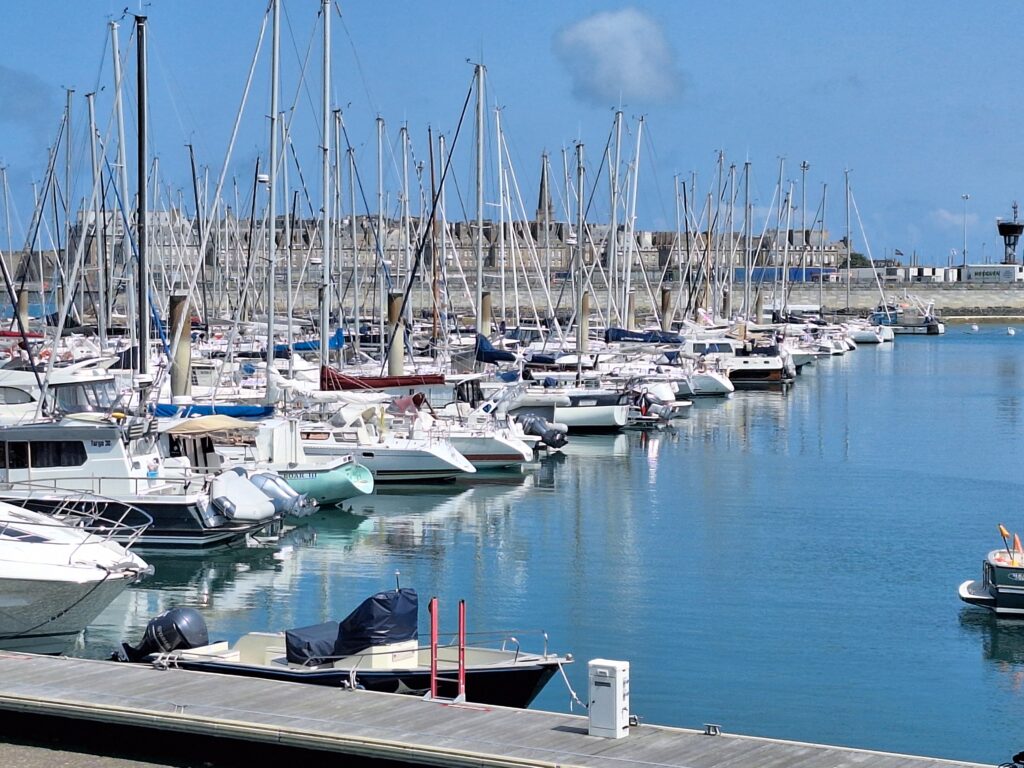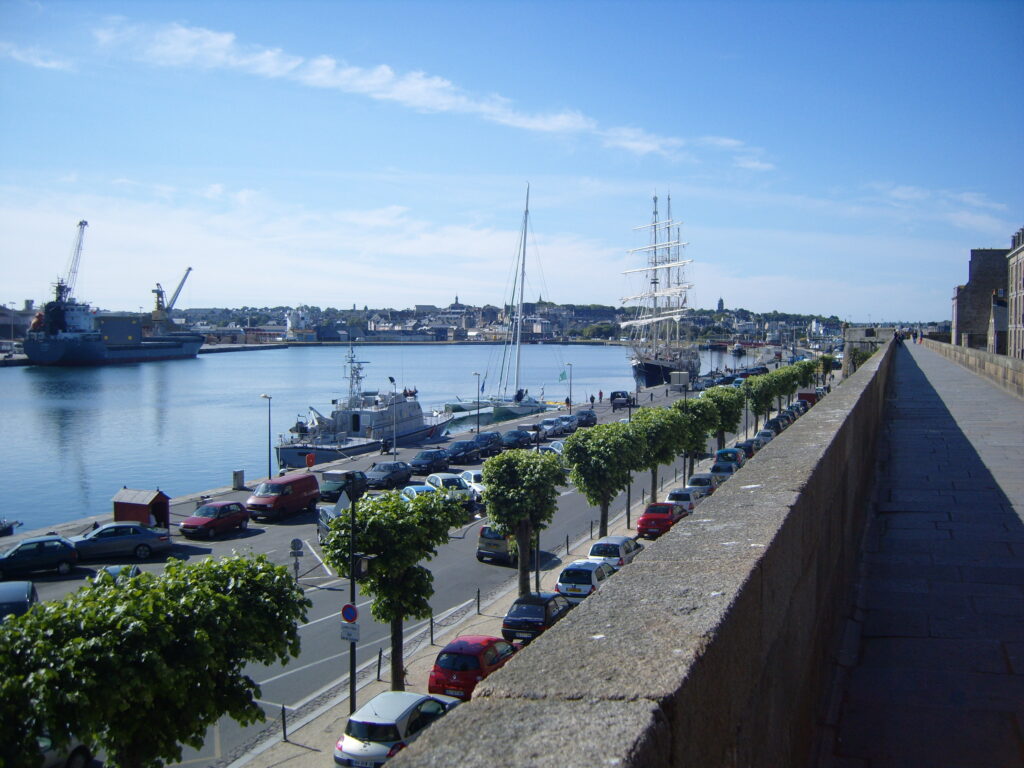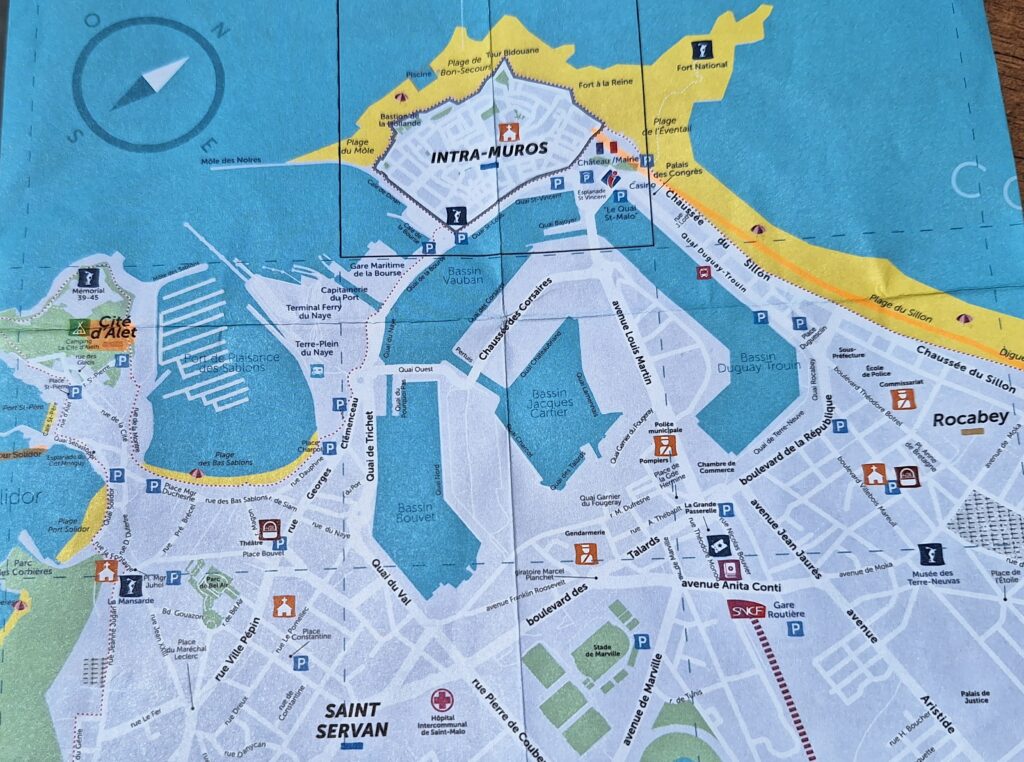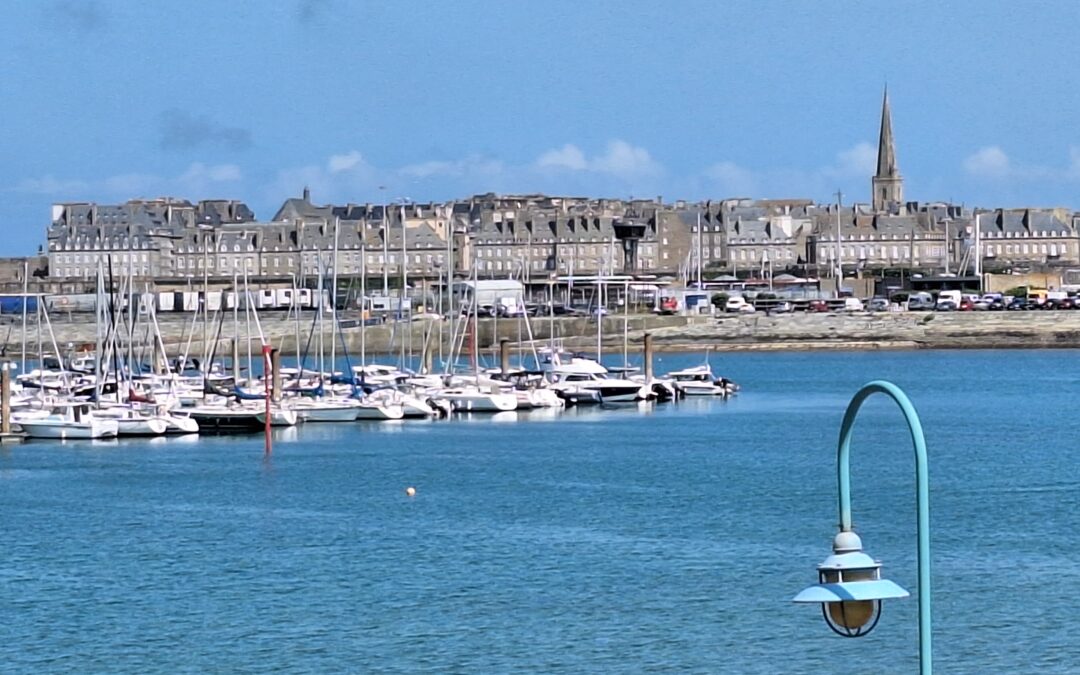Saint-Malo Revisited
Saint-Malo is my new favorite place in Brittany, though it’s really a tie with Dinan. I posted on Saint-Malo a few years ago, but this is a recent take on the beautiful jewel of Brittany. I was so glad to visit there again during my road trip this year. I could have easily stayed much longer. Not only is the Old Town really fun, including the shops, restaurants, and a stroll on top of the medieval city ramparts, but I loved getting to know the “other” peninsula, La Cité d’Alet (more below).
You’ll love the picturesque coastal town of Saint-Malo. You can stroll on the ramparts that surround the city and look out to the water and down on everything happening in the Old Town. Saint-Malo is surrounded on two sides by water. The Old Town lives inside the city walls, and a long beach unfolds to the east along what is known as the Emerald Coast.
It’s easy to see why Saint-Malo is one of the most popular places to visit in all of Brittany. In one direction, you have the English Channel across from England. In the other direction is the Rance River, which leads to the Atlantic Ocean. There’s water everywhere!

Saint-Malo is the birthplace of Jacques Cartier, who discovered Canada. You can visit his former home. Also born in Saint-Malo was François-René de Chateaubriand, a French writer, politician, and diplomat. Saint-Malo is famous because of its privateers (corsairs, in French), who were crown-sponsored pirates. You can visit a privateer’s home too!
The town was mostly destroyed during the Second World War, but was restored in exact detail to what it was before. It is the setting for the Pulitzer Prize-winning novel, All the Light We Cannot See by Anthony Doerr. Since the town faces England across the channel, a ferry services the island towns of Guernsey, Jersey, and the Channel Islands.
Saint-Malo is full of Brittany charm, as well as great crêpes, seafood, and other Brittany specialties. One example is the delicious Kouign Aman…an unbelievably yummy and decadent treat made with bread dough, lots of butter, and lots of sugar. It’s worth a taste. Trust me. If you’ve ever seen the horizontal striped shirts that seem so French, they originated in Saint-Malo and, of course, you can buy them in every format in town.
The first thing you’ll want to do is wander through the picturesque streets of the Old Town, also called Intra-Muros, meaning inside the walls in Latin. Enjoy the cobbled alleys and gray granite buildings. Begin at Chateaubriand Square. As you pass through Saint Thomas Gate (on the opposite side of the chateau), this charming center of town will greet you with lively cafés, restaurants, shops, and bakeries. It’s no accident that the population of this smallish town swells to several hundred thousand in summer. It’s a completely worthwhile destination, you’ll see.

A View from the Wall
On the south wall is the Grande’ Porte, a majestic stone entryway for nobles, merchants, and privateers back in the day.
The Old Town is surrounded by water, and has 2 beaches (one very long one) outside the walls, along with a few coves. You can stroll on a causeway along the beach, similar to a boardwalk, and take in the sometimes-nippy air. If you’d like to visit the Old Town without wearing out your shoe leather, you can take the Petit Train tour with commentary around town. You can catch the train at The Tourist Bureau, which is just outside the town walls at Porte St. Vincent (near the castle.) As in every stop on your road trip, it’s a great idea to stop in the Tourist Bureau to load up on helpful information, maps, and tickets.
Right next to the Tourist Bureau is also the Château de Saint-Malo, begun in 1424. It sits on one corner of the walled town. Currently, it is home to the city hall. There used to be the Museum of Saint-Malo history inside, but it has closed. The outside of the castle is impressive, though, and takes you back in history. Visits may be available inside the château and its courtyard.
Another historical structure is the Fort National, a 17-th century fort you can access by foot at low tide, leaving from the eastern beach near the Old Town. It’s free and open to visitors from June to September. Two more forts await you, all built to protect the coastland from invasions. Le Fort du Petit Bé and the Fort du Grand Bé. The latter is the burial place for François René du Chateaubriand. They are also accessible by foot at low tide. Make sure you return before the tides come in, though. You don’t want to wait there for hours until the tide recedes!
The walled Old Town isn’t the only lovely part of Saint-Malo. To the west is another peninsula that has a less touristy, small-town feel, called Cité d’Alet. This peninsula is surrounded by water on three sides. On one of them, there is a busy marina and port on the sparkling cove. The map below shows the Old Town to the right. To the west of it, there is the peninsula, La Cité d’Alet. This area was important in World War II history. This site gives interesting details of those events. You can easily see why this was a port town that had to be defended for centuries.

More to See in Saint-Malo
10,000 Fish! Nearby is the Grand Aquarium, located on Ave. George Patton. It houses 600 kinds of fish (10,000 of them) and a shark tank. From the underwater cave to the touch pools, you’ll be endlessly fascinated by this water world. Open from 10 am to 7 pm. Weekday Admission Adults, 18€90. Children age 4 to 12, 13€90. Otherwise, 19€90 and 14€90. You can easily spend the day here in its 9 rooms. Great for families.
There’s another beach near the Cite d’Alet, La Plage des Sablons. If spas are your interest, there are several notable ones in town to put you in the lap of luxury, or at least relaxation! A few miles away, you’ll find the resort town of Paramé with a long sandy beach, a spa, and historic homes.
If you like oysters, the town of Cancale is a 20-minute drive from Saint-Malo, and is well-known for oyster farming. There’s a lot to see in the region for day trips, such as the upscale seaside town of Dinard.
And of course, don’t forget the crepes and Kouign Amann! 
Note: this updated post has some overlap with an earlier post on Saint-Malo (which is under the title St. Malo, which I thought was correct at the time, when it is really Saint-Malo!) You can find that earlier post listed below, if you’re interested. There are some nice photos that are different, as well as a few additional details.
Related Posts
St. Malo: A Treasure on the Coast of Brittany
Brittany: An Array of Adventures
Brittany Charm: 8 Towns you Must See
A Tour Through Western Brittany
It is still a treasure to be discovered!





